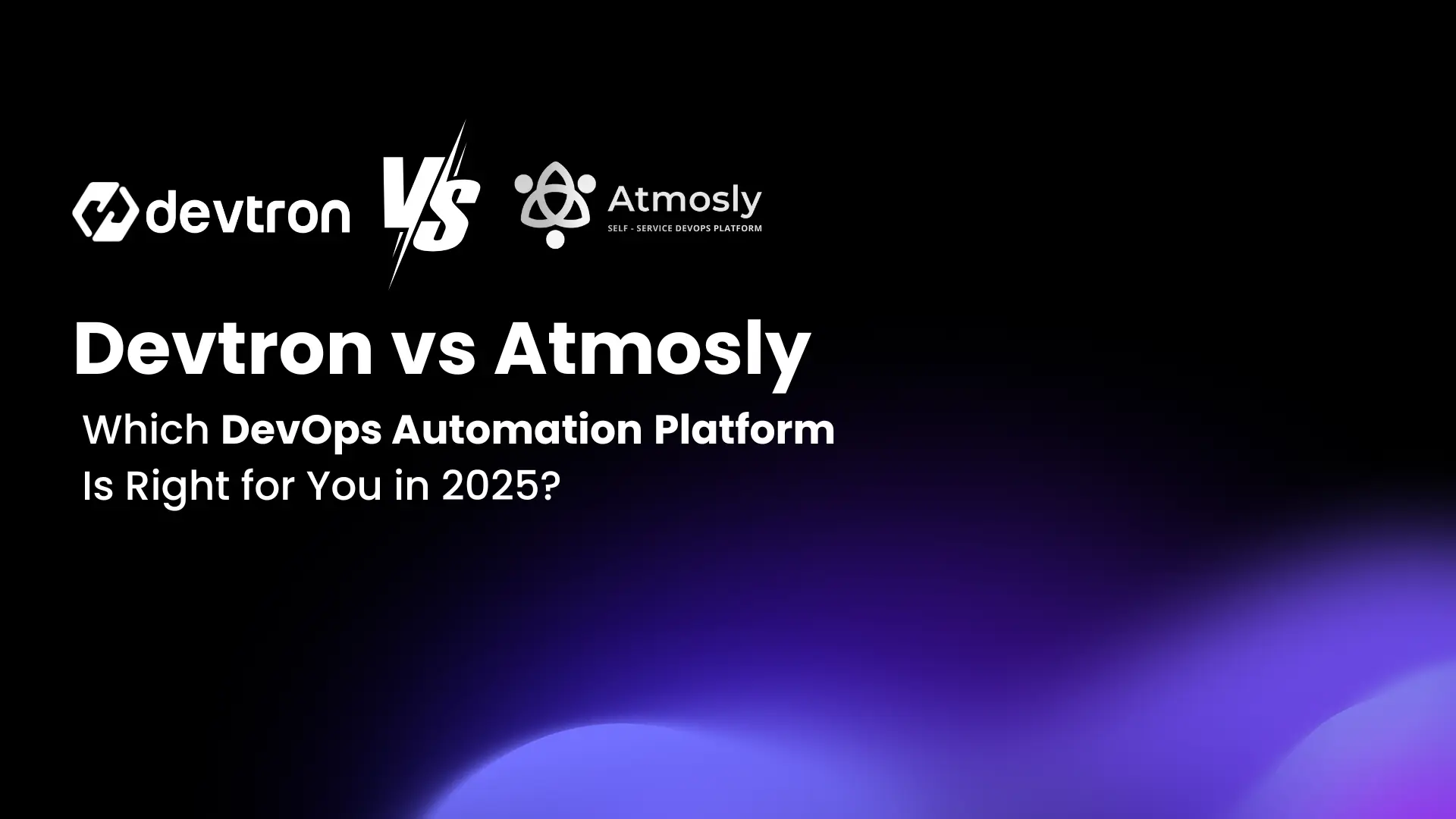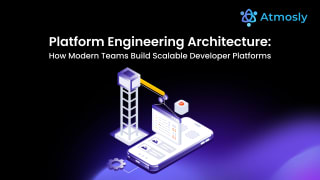Choosing the right platform can make or break your development velocity. Two major players in the space Devtron and Atmosly offer distinct approaches to solving cloud-native deployment challenges.
But which one is right for your engineering team in 2025?
In this guide, we’ll break down the key differences, use cases, and performance metrics to help you make an informed decision.
Overview: Devtron vs Atmosly
| Feature | Devtron | Atmosly |
|---|---|---|
| CI/CD Automation | Integrated ArgoCD UI | Native Pipelines + GitHub Actions |
| GitOps Support | Yes | Yes |
| Environment Management | Basic | Ephemeral + Persistent Environments |
| Secrets Management | External tools (Vault, etc.) | Built-in secrets engine |
| Drift Detection | Limited | Full GitOps-based drift rollback |
| User Experience | Moderate learning curve | Lightweight, developer-friendly UX |
| Platform Engineering Use Cases | Limited | IDP-ready (supports golden paths) |
| Pricing | Open-source, enterprise tier | Flexible pricing for scale |
| Best For | Mid-size teams with ArgoCD | Platform teams, modern DevOps orgs |
What is Devtron?
Devtron is an open-source DevOps platform that streamlines Kubernetes-based deployments. It wraps tools like ArgoCD, Helm, and K8s into a unified UI, offering visibility into deployments, pipelines, and configurations.
While it’s a good option for teams already using ArgoCD, Devtron can have a steep learning curve for those new to Kubernetes or GitOps workflows.
What is Atmosly?
Atmosly is a cloud-native DevOps automation platform built for modern engineering teams that want to move fast without compromising on control or security.
From CI/CD pipelines, on-demand environment provisioning, to secrets management and drift detection, Atmosly acts as a powerful backend layer that enables developer self-service and platform engineering excellence.
Use-case Ready for:
- Developer Self-Service Portals
- Platform Engineering Teams
- Microservices CI/CD Pipelines
- Security-First Deployments
Feature-by-Feature Comparison
1. CI/CD Workflows
- Devtron: Tightly coupled with ArgoCD, useful for Argo-native teams.
- Atmosly: Offers native CI/CD automation with GitHub Actions, GitOps triggers, and workflow reuse.
2. Secrets & Config Management
- Devtron: Requires integration with HashiCorp Vault or Sealed Secrets.
- Atmosly: Built-in secrets manager + RBAC policies = secure by default.
3. Environment Provisioning
- Devtron: Manual setup or Helm-based environments.
- Atmosly: Spin up ephemeral or persistent environments on demand (ideal for preview builds, QA, staging).
4. User Experience
- Devtron: UI can be cluttered for new users.
- Atmosly: Clean, developer-friendly UX focused on speed and clarity.
5. Platform Engineering Support
- Devtron: Not built with internal developer platforms (IDPs) in mind.
- Atmosly: Designed for golden paths, self-service templates, and platform abstraction.
Why Teams Are Switching to Atmosly
- Need a cleaner, faster GitOps pipeline without the ArgoCD overhead
- Want seamless secrets management with zero external dependency
- Require preview environments that spin up automatically
- Building a platform engineering layer internally
- Prefer simple UX that reduces onboarding time for developers
What the Community Says
“We moved from Devtron to Atmosly because we wanted to enable product teams to deploy with confidence. Atmosly gave us that control layer with GitOps + automation, without adding toolchain chaos.”
— Sr. Platform Engineer, Fintech Startup
If you’re looking for a DevOps toolset that’s open-source and Argo-native, Devtron might work for you.
But if you need a modern DevOps automation platform that supports:
- Internal developer portals
- GitOps-first deployments
- Dynamic environments
- Built-in security and drift management
then Atmosly is the better choice and it’s built for the scale of 2025 and beyond.
Ready to Try Atmosly?
Start your free trial today and see how fast your team can go from commit to production.
Book a demo or Try Atmosly Free






